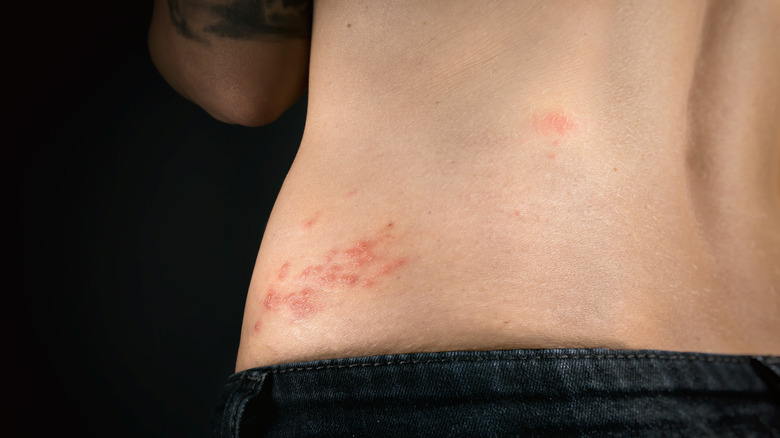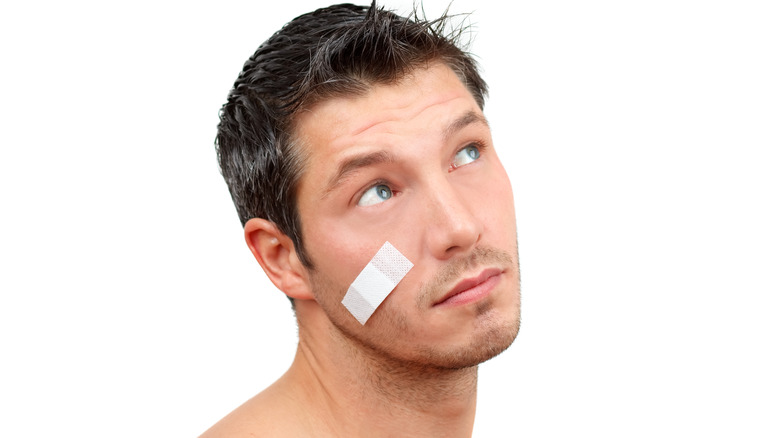Are Shingles Contagious?
While generally thought of as a condition that affects only older individuals, shingles can develop in anyone at any time (via Healthline). In fact, according to the National Foundation for Infectious Diseases, half of all Americans who live to the age of 85 will likely develop shingles at some point in their lives.
According to the U.S. Centers for Disease Control and Prevention (CDC), the virus responsible for the development of shingles, as well as chickenpox, is called the varicella zoster virus (VZV). Even well after someone experiences chickenpox, VZV remains in the body. At some point, the virus reactivates in the form of shingles. While most people experience just one singular outbreak in their lives, it is possible to experience multiple episodes.
The two most common symptoms experienced during a shingles outbreak are pain and a rash (via National Foundation for Infectious Diseases). The pain may begin a few days before the development of the rash and can sometimes linger after the rash has disappeared. Stabbing, throbbing, or shooting pain is not uncommon, and additional symptoms can include headache, chills, fever, and decreased muscle strength. In some cases, long-lasting nerve pain or effects on one's hearing or eyesight may occur.
If infected, is it possible to transmit this health condition to others?
Transmission is possible during this phase of a shingles outbreak
While shingles itself is not contagious, the varicella zoster virus behind the condition is (via National Institute on Aging). A typical episode can last anywhere from three to five weeks and goes through different phases in the healing process. Outbreaks often emerge along the torso or the face, though only on one side. The rash is often accompanied by blisters and it is during this phase of the outbreak that transmission of the virus to others is possible. According to the CDC, should the fluid from the blisters make contact with someone who has never had chickenpox, they are likely to become infected with chickenpox, rather than with shingles.
For this reason, it's important to take preventative measures during an outbreak until the blisters are fully dried out and healed. Keeping the rash adequately covered is the best form of protection in order to reduce exposure to blister fluid (via Healthline). In addition, be sure to routinely wash your hands and avoid direct contact with particularly vulnerable populations such as young infants, the immunocompromised, and those who are pregnant. A vaccine is also available to those 50 years of age or older to help protect against shingles outbreaks. Be sure to consult with your doctor regarding vaccination.


